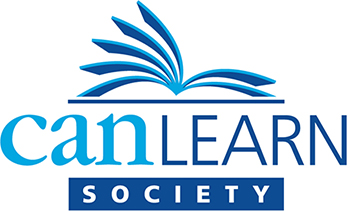Peter Jarvis is a well-known researcher in the field of adult education who spent many years writing about why learning is so important. In one of his books, he suggests:
“Learning is food, ingest it, and it will enrich the whole human being. We cannot exist without learning. Learning is almost synonymous for living.”
As we continue to navigate our new normal, we are becoming increasingly aware of both day-to-day challenges and far-reaching implications of the current situation on our emotional well-being.
COVID-19 has brought with it a pressure that families with children had never experienced before.
Containing the preschool balls of energy with no regard to social distancing and keeping them occupied is the tough place to be as a parent. With school classes now being offered online, parents are worried if they will be able to rise to the challenge of supporting their children`s learning. The Internet is full of suggestions for online activities; however, one cannot but wonder about the potentially harmful impact of too much screen time on children`s health and well-being.
“Am I doing this right?” is the most common question we heard from adults with children who participated in the past two weeks.
The purpose of this blog is to offer insights and share some family learning tools that our literacy practitioners have been using to support the emotional well-being of our program participants.
Our first tip for parents is to take 3-4 deep breaths and remember that if they are not taking good care of themselves, they will not be able to take care of their children. As such, we remind them to stay positive and know that they are strong enough to get through this.
(So, before you read any further, take 3-4 deep breaths and remember that the only way we can fully be there for our family is to be there for ourselves fully.)
The next step involves helping parents develop an awareness of how family learning can help their family continue to learn, hope and grow. Family learning is an important strategy for maintaining emotional well-being and preventing potential mental health difficulties in the future.
What we at CanLearn call family learning refers to a whole range of activities through which parents and children improve their understanding of the world by learning together as a family. Family learning activities are unplugged. The focus is on helping parents to develop a learning attitude for themselves intentionally and to begin modelling it for their children. This helps children build the attitudes, behaviours and understanding that they will carry with them into the classroom, into their adult lives, and into their own future families. Seeing their parents learn and learning together as a family will be crucial in helping children not only cope with the circumstances of our new normal but also seamlessly transition to classroom learning once the situation gets back to normal. Continuing to learn as an adult will be crucial in helping parents stay resilient and equipped for the time when nobody can predict what the future will bring.
In addition to encouraging families who participate in our programs to engage in family learning at its own pace and adapt to its own needs, our facilitators have been guiding, modelling and sharing family learning activities that parents can use with their children at their dinner table, in their living room, while preparing meals or taking walks outside.
Many of these ideas are on our website:
Download ‘Just Play’ (PDF)
Download ‘Phonological Awareness’ (PDF)
Here are more ideas for families with older children:
- Write letters or postcards of encouragement and send them to a nursing home or your elderly neighbours
- Create a family cookbook
- Write Mad Libs together (for instruction go to www.redkid.net)
- Make a list of different ways you can use a word
- Have each family member put a “mystery object” in a paper bag and exchange the bags. Each family member then reaches into their bag and comes up with a list of descriptive words describing the object (at least four words, more if possible). You can then write a paragraph describing the object and end it with a sentence saying what you think the object is.
- Pick a country and write a paragraph for 15 minutes of what you would like to do there on a trip. Read your stories.
- Read an article together and then write it in your own words (paraphrase). When you are finished, compare your version with the original.
- Interview a family member and ask them about their life. Write their biography.
- Gather ten coins and make calculations using these coins.
- Make a poster of 5 words you find tricky to spell. Put the tricky part in a different colour (e.g. beautiful)
- Play multiplication ping pong with one person batting the question and the other batting back the answer.
- Put the numbers 2, 5, 3 and 4 on separate sticky notes. Make as many different odd numbers between 4,000 and 6,000 as you can.
- Figure out if you would rather have 3/5 of $10 or 75% of $10. Explain your thinking.
- Go outside for some fresh air while making sure that you practice social distancing.
We will continue to share family learning ideas and activities in the upcoming weeks. We feel it is so important!
